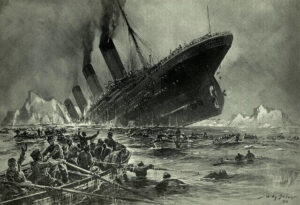10 Amazing True Stories of Dogs Surviving the Unthinkable
Dogs Are the Best, and Sometimes They’re Practically Supernatural
Let’s be honest—dogs are some of the best beings on Earth. No debate necessary. They’re loyal, playful, heart-meltingly cute, and surprisingly brilliant. Dogs can learn to fetch your slippers, sniff out hidden drugs, detect oncoming seizures, or just be your emotional rock on a bad day. Good dog! Who’s a good dog? You are!
But beyond their cuteness and cleverness, some dogs have gone above and beyond—surviving the impossible, enduring extreme odds, and showing the kind of spirit that seems almost supernatural. These aren’t just good dogs… they’re legendary dogs.
10. Three Dogs Survived the Titanic
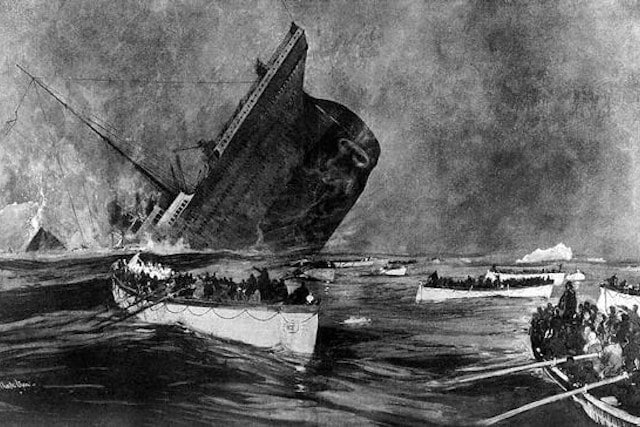
We all know the tragic story of the Titanic: over 1,500 lives lost, just 705 survivors, and enough drama to inspire a blockbuster movie. But there’s a lesser-known group of survivors you may not have heard about—the dogs.
There were twelve dogs on board the Titanic, mostly brought along by wealthy passengers for this luxurious transatlantic voyage. Only three dogs survived—two Pomeranians and one Pekingese. Their secret? They were small enough to be snuck onto lifeboats.
One survivor, Elizabeth Barrett Rothschild, reportedly brought her Pomeranian aboard a lifeboat and refused to leave without it. Rescuers aboard the Carpathia weren’t thrilled to see a dog taking up space, but Rothschild made it clear: if the dog wasn’t going, neither was she.
Another story is far more heartbreaking. Ann Isham, who had boarded the Titanic with a large dog—possibly a Great Dane or a St. Bernard—refused to abandon her beloved pet when it became clear it couldn’t board a lifeboat. She stayed behind. Later, passengers reported seeing the two together, lifeless in the water, loyal to the end.
These dogs weren’t just lucky—they were symbols of devotion, both given and received.
9. Two Sled Dogs Were Abandoned for 11 Months in the Antarctic and Survived

There are few places on Earth more inhospitable than Antarctica. Freezing temperatures, relentless winds, and not a scrap of civilization for thousands of miles. It’s no place for a person—or a dog. But in 1957, two sled dogs named Taro and Jiro proved they were no ordinary pups.
A Japanese research team had brought 15 sled dogs with them on an expedition to the Antarctic. When things took a turn for the worse, the team had to be airlifted out in a hurry, believing they’d return in just a few days to recover the dogs. They left them behind, chained up, with a bit of food—just enough for a few days.
But days turned into weeks. And weeks turned into eleven months.
When a new expedition team finally returned nearly a year later, they expected to find only heartbreak. And for most of the dogs, sadly, that was true. But then came the miracle—Taro and Jiro were still alive. Against all odds, the two brothers had somehow unchained themselves and survived on their own through an entire Antarctic winter.
No one knows exactly how they did it, but researchers believe they learned to hunt, likely catching penguins or scavenging, and relied on pure instinct and brotherly teamwork to make it through.
Taro and Jiro became national heroes in Japan, and their incredible story inspired the film Eight Below. To this day, statues of them stand in tribute—furry legends who refused to give up.
8. A Dog Took on Five Pirates and Survived

Modern-day pirates aren’t just characters from old stories—they’re real, and sometimes they cross paths with the wrong dog.
In 2013, property developer Peter Lee and his wife were sailing off the coast of Venezuela when their journey took a terrifying turn. Out of nowhere, five pirates—four of them armed—boarded their yacht. The couple was overpowered, and Peter was tied up while the intruders looted the vessel, grabbing cash, electronics, and jewelry.
But the Lees weren’t alone.
They had their 50-pound African dog, Kankuntu, on board—a loyal companion they’d adopted while traveling the world. And Kankuntu didn’t take kindly to armed strangers threatening his humans. Despite being outnumbered and outgunned, he launched into action, biting and attacking the pirates in an effort to protect his family.
The pirates responded with brutal force—shooting him, stabbing him in the back, and leaving him for dead before they fled the scene.
Once the threat was gone, Peter’s wife untied him. Wasting no time, he carefully removed the bullet, treated the wounds, and got Kankuntu to a vet. Incredibly, after everything, the brave dog recovered in just a few days.
Kankuntu may not have worn a cape, but he proved beyond any doubt that heroes come in all shapes and sizes—and sometimes, they bark.
7. The Royal Dog That Survived a Tragedy: Joy, the Last of the Romanovs
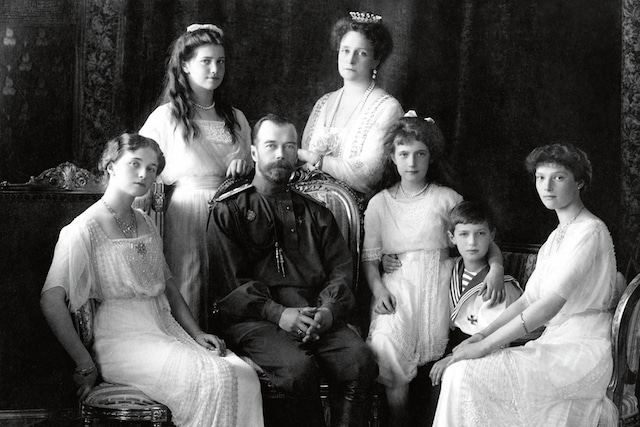
When we think of royal tragedies, few stories are as haunting and unforgettable as that of the Romanov family—the final imperial rulers of Russia. Their downfall wasn’t just the end of a dynasty; it was the abrupt, brutal erasure of a once-mighty lineage. But amid the darkness of history, a small, unexpected survivor emerged: a little dog named Joy.
Joy was no ordinary pet. He belonged to Tsarevich Alexei, the young heir to the Russian throne and the son of Tsar Nicholas II. Joy was a King Charles Spaniel, a breed known for its loyalty and gentle nature—traits that made him especially beloved by the Romanov children during their bleak final days.
After the revolution broke out, the Romanovs were placed under house arrest and eventually moved to a secluded location in Yekaterinburg. It was there, in a cold basement in 1918, that the Tsar, his wife, and their five children were executed by Bolshevik soldiers. Several of their pets were also killed during the chaos.
But somehow, Joy survived.
According to historical accounts, Joy had been wandering outside the Ipatiev House at the time of the execution. A sympathetic guard discovered the trembling dog shortly after the massacre. Instead of following orders, he smuggled the pup away, saving him from a grim fate.
Joy’s journey didn’t end there. Eventually, he was taken out of Russia and brought to Britain, a country with close royal ties to the Romanovs. There, the dog found an unlikely second chapter—living out his days in peace and comfort at Windsor Castle, where he became a small but poignant symbol of a family lost to history.
This tale is more than just an emotional footnote; it’s a powerful reminder of how history’s biggest events often leave behind the smallest survivors. Joy’s life—marked by tragedy, compassion, and unexpected rescue—captures the kind of unbelievable reality that feels more like fiction.
If you ever visit Windsor Castle and happen to see a quiet spot in the royal pet cemetery, you might just be standing near the final resting place of a dog that lived through one of history’s darkest chapters.
6. Two Heroic Guide Dogs Who Refused to Leave Their Humans on 9/11

September 11, 2001—a day the world will never forget. Amid the horror of the World Trade Center attacks, stories of heroism surfaced—some human, some… canine. Incredibly, two guide dogs managed to save their blind owners from what should have been certain death. These stories aren’t just remarkable—they’re almost unbelievable.
Let’s start with Michael Hingson, a man who had been blind since birth, working high up on the 78th floor of Tower One. When the first plane slammed into the building just 18 floors above him, chaos erupted. But amid the screams, falling debris, and suffocating smoke, one presence remained calm: his guide dog Roselle.
Without hesitation, Roselle took the lead—literally. She navigated Hingson through terrified crowds and down all 78 floors of the tower. As they emerged outside, Tower Two began collapsing. Dust, steel, and concrete exploded through the air. Yet Roselle pressed on, guiding Hingson to the subway and then walking with him 40 blocks to a friend’s home. No panic. No pause. Just purpose.
And then there’s Omar Rivera, who worked on the 71st floor of the same building. His guide dog, Salty, was by his side when the plane hit. As the stairwells filled with hundreds of fleeing people, Rivera, in an act of selflessness and heartbreak, released Salty’s harness—hoping the dog could escape alone and survive.
But Salty had other plans.
Instead of running, Salty stayed. Loyal to the end, he nudged Rivera, led him into the stairwell, and helped guide him down flight after flight, all the way out into the chaotic streets below. Both man and dog made it out alive.
These dogs weren’t trained for war zones or disaster rescue. They were trained to help navigate sidewalks and crosswalks. Yet, in the face of one of history’s most devastating events, they made life-or-death decisions with courage and clarity that leaves many stunned even today.
Their actions are a testament to the intelligence, loyalty, and instinct of service animals, and to the incredible bond between humans and dogs—especially when everything else is falling apart.
5. The Stray Dogs Who Saved 50 Soldiers—and the Heartbreaking Twist That Followed
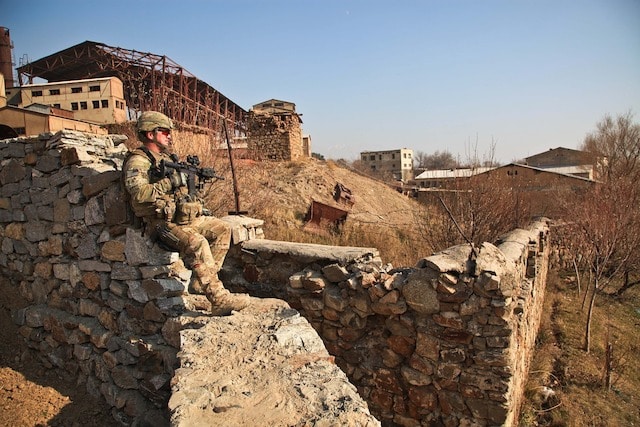
In war zones, the unexpected becomes normal. But sometimes, the most unlikely heroes walk on four legs.
In February 2010, at a U.S. Army base in Afghanistan, three stray dogs—Rufus, Sasha, and Target—earned a place in military history. These weren’t trained service animals or military K9s. They were just strays who had found companionship and scraps of kindness from American soldiers stationed far from home.
That bond may have saved more than 50 lives.
One cold night, as most of the soldiers slept, a suicide bomber approached the base. He was wearing an explosive vest and intended to walk into the soldiers’ quarters undetected. But the dogs sensed something was wrong. They charged, barking furiously, biting, doing whatever they could to keep the intruder outside.
Their bravery forced the attacker to detonate outside the building. The blast injured five soldiers—but thanks to the dogs, no one inside was killed.
Tragically, Sasha died from the explosion. But Rufus and Target survived, and what happened next was almost as remarkable as their act of heroism.
Moved by their courage, the soldiers fought to bring them to the United States, where the dogs could live out their lives in peace. With the help of crowdfunding, supporters raised over $21,000, making it possible to fly Rufus and Target across the globe.
Rufus was adopted by a soldier in Georgia, where he finally had a home beyond sandbags and sirens. Target, however, faced a fate no one expected.
Just months after arriving in the U.S., Target was picked up by Animal Control after wandering away from home. Despite being microchipped and widely known for his heroic story, a devastating mistake occurred. Target was misidentified as a stray with no owner—and was euthanized before his person could reach the shelter.
The story spread quickly, sparking outrage and heartbreak across the country. It raised urgent questions about animal shelter protocols, identification systems, and how society honors its non-human heroes.
These dogs weren’t just pets—they were warriors in their own right. Their loyalty, instinct, and bravery saved dozens of lives. And while not every ending was happy, their story continues to inspire.
4. Chernobyl’s Unlikely Survivors: The Stray Dogs Thriving in the Exclusion Zone

When we think of Chernobyl, we picture abandoned buildings, eerie silence, and invisible danger. But nature has a way of reclaiming even the most inhospitable places—and in this radioactive ghost town, hundreds of stray dogs aren’t just surviving, they’re thriving.
A Post-Disaster Canine Boom
After the 1986 nuclear disaster, humans fled Chernobyl, but their pets were left behind. These abandoned dogs bred freely, creating generations of strays adapted to life in the Exclusion Zone. With no natural predators and plenty of abandoned food sources, the dogs carved out their own territory—completely unaware of the radiation surrounding them.
By 2018, over 250 dogs were living in the area, some venturing dangerously close to the reactor itself. Workers at the site grew attached to them, even naming favorites. But with no proper care, the population kept growing—until officials ordered a mass culling.
From Tragedy to Second Chances
One worker refused to carry out the killings, sparking an international effort to save the dogs. Over 200 strays were tested for radiation, vaccinated, and flown to the U.S. for adoption. The rest remained, becoming the subject of a groundbreaking genetic study—how does long-term radiation exposure affect them?
Science Meets Survival
Researchers now track these dogs to see how radiation alters their DNA across generations. Surprisingly, many appear healthy, raising questions about animal resilience in extreme environments. Could their genes hold clues for human survival in hazardous conditions?
Meanwhile, the dogs of Chernobyl continue to roam—scavenging, playing, and even befriending scientists and tourists. They’ve become unexpected symbols of life after disaster, proving that even in the most broken places, survival finds a way.
3. A Dog Kept a Lost Toddler Alive in the Siberian Wilderness for 11 Days

You’ve probably heard about dogs surviving after getting lost—maybe turning up miles away or even months later. That’s impressive. But what if a dog not only survived… but also kept a 4-year-old child alive in one of the coldest and most dangerous places on Earth?
This is the astonishing true story of a dog who became a hero in the Siberian wild.
In the summer of 2014, little Karina Chikatova went missing in the remote wilderness of Siberia, one of the harshest climates on the planet. She was just a toddler—barely four years old—when she tried to follow her father, who was walking to a neighboring village. But he didn’t know she was behind him. Her mother, on the other hand, thought she had gone with him. It took four full days before anyone realized Karina was missing.
When search teams finally got involved, the odds weren’t looking good. The terrain was brutal—thick forests, steep hills, and the looming presence of wild animals, including bears and wolves. Over 100 people, including rescue dogs, helicopters, and drones, were sent into the woods to search.
And then, something unexpected happened.
After 9 days, the family’s dog suddenly reappeared—tired, thin, but alive. Searchers feared the worst. Surely the girl hadn’t made it, they thought. But the dog had other plans. He led rescuers straight to Karina, still alive, curled up in tall grass.
Despite being lost for 11 days, the girl was shockingly well. She had bruises, had lost some weight, and was weak—but she was alive. How?
She had survived by eating berries, drinking stream water, and most importantly, sleeping beside the dog to stay warm in freezing temperatures. At night, when Siberia turns bitter cold, the dog had acted like a living blanket, shielding her from hypothermia. And once Karina grew too weak to move, the dog ran home to get help.
It’s a survival story almost too incredible to believe, and a reminder that loyalty and instinct can sometimes outmatch training or planning.
2. Before Laika: Two Stray Dogs Were the First to Survive Spaceflight
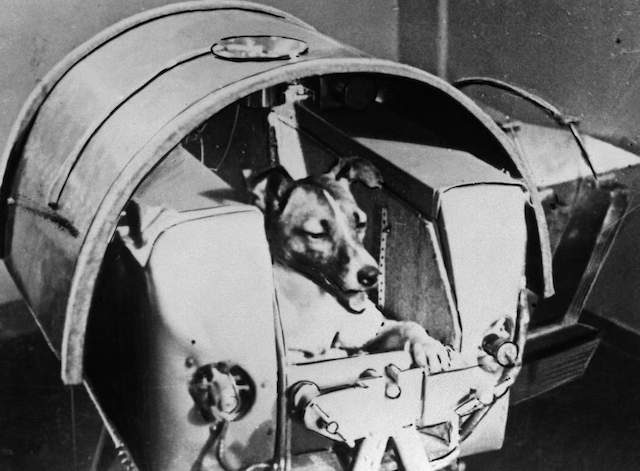
When people talk about the first dogs in space, the name that almost always comes up is Laika—the sad story of the pup sent into orbit by the Soviets in 1957 with no plan for her return. But what if we told you that two other dogs actually made it into space before Laika, and they lived to bark another day?
Meet Dezik and Tsygan, two stray dogs pulled from the streets of Moscow in the early 1950s. They weren’t purebred, trained, or particularly special at first glance. But in 1951, these two canines made history. They became the first animals to survive a space launch, part of the Soviet Union’s early experiments in space exploration.
While their flight didn’t take them into full orbit—unlike Laika, who was launched later—their mission was no less groundbreaking. Dezik and Tsygan were placed aboard a sub-orbital rocket, launched to the very edge of space, and then successfully returned to Earth alive. This made them the first successful space-traveling dogs in history.
Unfortunately, their fates split after that historic flight. Dezik was chosen for a second mission, this time paired with another dog. That second flight ended in tragedy when the capsule failed during descent. Tsygan, however, got the happy ending every test subject deserves—she was adopted by a Soviet scientist, spent her remaining years on solid ground, and lived out her life in peace.
It’s easy to forget these early pioneers when Laika’s story dominates headlines, but without Dezik and Tsygan, the road to orbit—and eventually the Moon—might have taken a different turn.
1. Odin the Wonder Dog: The Loyal Guardian Who Survived a California Wildfire

When disaster strikes, some heroes walk on four legs. This is the incredible story of Odin, a devoted livestock guardian dog who refused to abandon his post—even as flames engulfed his home. His fierce loyalty not only saved his own life but also protected an entire herd of animals from one of California’s most destructive wildfires.
A Family’s Heartbreaking Choice
In 2017, as the Tubbs Fire tore through Santa Rosa, Roland Hendel and his family had mere minutes to evacuate. They scrambled to save their pets and livestock, but Odin—a giant, stubborn Great Pyrenees mix—refused to leave his goats. Despite desperate attempts to load him into the car, Odin stood his ground. With flames closing in, the family was forced to flee without him, fearing the worst.
Against All Odds: A Miraculous Survival
Days later, when the Hendels returned to their charred property, they expected devastation. Instead, they found a modern-day fairytale survival story:
- Odin, badly burned but alive, limping toward them through the ashes.
- All eight rescue goats unharmed, huddled in a protected area.
- Even a group of wild deer had sought refuge with Odin’s herd.
How did he do it? Investigators believe Odin led the animals to a natural firebreak—a rocky, less flammable area—and used his body as a shield against the heat and embers. His thick fur, though singed, may have protected him from fatal burns.
The Aftermath: A Dog’s Unbreakable Spirit
Odin’s burns required months of treatment, but his instinct to protect never wavered. His story went viral, symbolizing the extraordinary bond between working dogs and their charges. Even more remarkably, wildlife experts noted that Odin’s actions mirrored ancient livestock guardian behaviors—proving that in crises, instinct can trump even wildfire.













